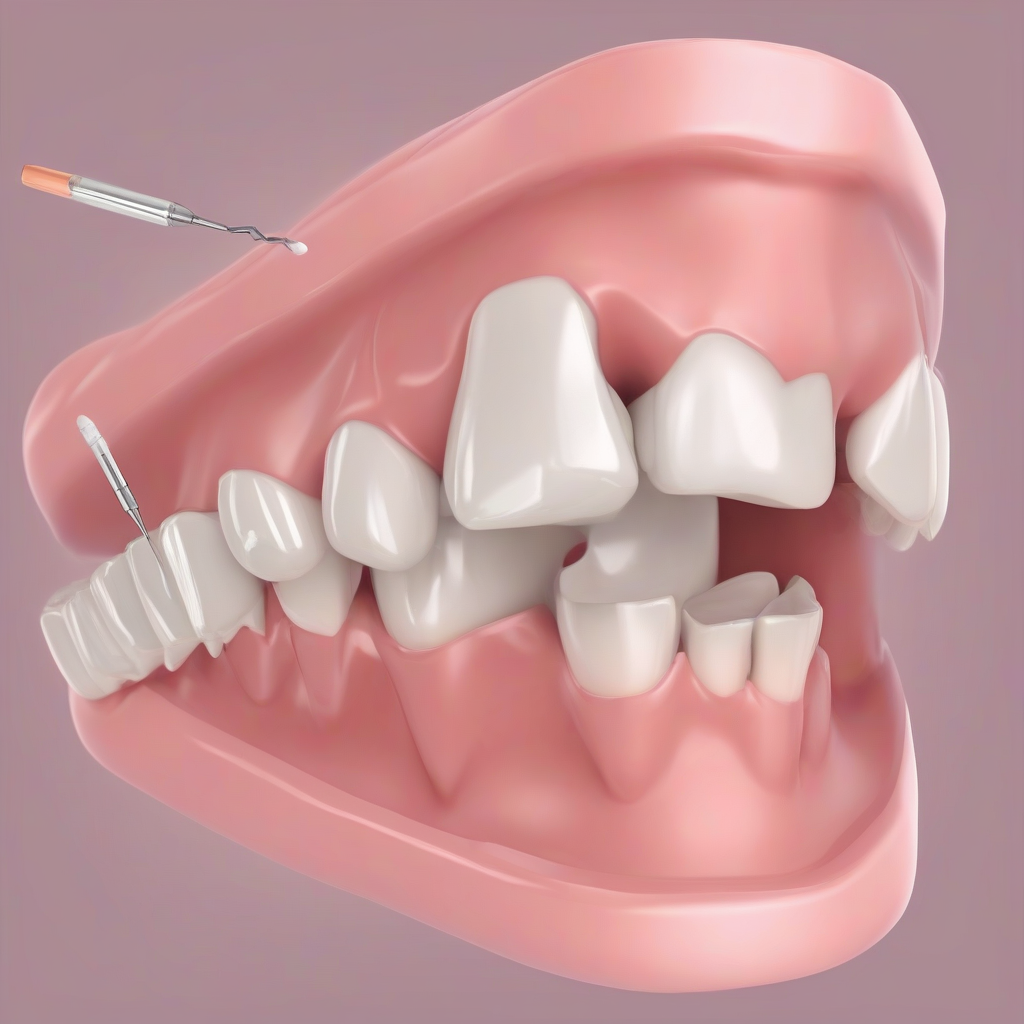Tooth Broken Below the Gum Line: Treatment Options and Recovery
A tooth fracture below the gum line presents a significant dental challenge, often requiring more complex and extensive treatment than a fracture above the gum line. The location of the break makes it harder to access and repair, increasing the risk of complications if left untreated. This article will explore the various treatment options available, the factors influencing treatment choice, and the recovery process involved.
Diagnosing a Tooth Fracture Below the Gum Line
Diagnosis begins with a thorough clinical examination by a dentist. This may include:
- Visual Inspection: The dentist will examine the affected tooth and surrounding gums for signs of fracture, swelling, or discoloration.
- Radiographic Examination (X-rays): X-rays, particularly periapical radiographs, are crucial for visualizing the extent of the fracture, identifying the location of the break, and assessing the involvement of the tooth root.
- Dental Probe: A dental probe may be used to carefully explore the fracture site and assess its depth.
- Transillumination: In some cases, transillumination (shining a light through the tooth) may help detect hairline fractures.
Accurate diagnosis is crucial for determining the appropriate treatment plan. The severity of the fracture, the involvement of the pulp (the soft tissue inside the tooth), and the overall health of the tooth will all influence treatment decisions.
Treatment Options for a Tooth Broken Below the Gum Line
The treatment options for a tooth fractured below the gum line vary depending on several factors, including the severity of the fracture, the patient’s overall health, and the extent of damage to the tooth’s supporting structures.
1. Root Canal Therapy
If the fracture extends into the pulp chamber, root canal therapy is usually necessary. This procedure involves removing the infected or damaged pulp tissue, cleaning and shaping the root canals, and filling them with a biocompatible material (gutta-percha). Root canal therapy aims to prevent infection and save the tooth.
- Procedure: The dentist will access the pulp chamber through an opening in the tooth. The infected pulp will be removed, the canals cleaned and shaped, and then filled with gutta-percha.
- Post-Root Canal: Following root canal therapy, the tooth may require a crown to provide strength and protection.
2. Crown Placement
A crown is a cap placed over the remaining tooth structure to restore its shape, size, and strength. It is frequently used in conjunction with root canal therapy or as a standalone treatment for less severe fractures. Crowns can be made from various materials, including porcelain, ceramic, or metal.
- Preparation: The dentist will prepare the tooth by removing a small layer of enamel to provide a secure fit for the crown.
- Impression: An impression of the prepared tooth is taken and sent to a dental laboratory to fabricate the crown.
- Cementation: Once the crown is ready, it is cemented onto the tooth.
3. Dental Implants
If the tooth is severely damaged or the fracture involves significant bone loss, a dental implant may be the best option. Dental implants are artificial tooth roots that are surgically placed into the jawbone. Once the implant has integrated with the bone, a crown is attached to restore the missing tooth.
- Surgical Placement: The implant is surgically placed into the jawbone.
- Osseointegration: The implant needs time to fuse with the jawbone (osseointegration).
- Abutment and Crown Placement: After osseointegration, an abutment is placed on the implant, and a crown is attached.
4. Extraction
In cases of extensive damage, severe infection, or when other treatments are not feasible, extraction may be necessary. Extraction involves removing the tooth from the socket. After extraction, the dentist may recommend replacing the missing tooth with a bridge, implant, or partial denture.
- Procedure: The dentist will loosen the tooth and remove it from the socket.
- Aftercare: Aftercare instructions will be given to manage pain, swelling, and bleeding.
- Replacement Options: Options to replace the extracted tooth include dental implants, bridges, or dentures.
Factors Influencing Treatment Choice
Several factors influence the choice of treatment for a tooth fractured below the gum line:
- Extent of the Fracture: The severity and location of the fracture determine the feasibility of different treatments.
- Pulp Involvement: If the fracture extends into the pulp, root canal therapy is usually necessary.
- Bone Support: The amount of remaining bone structure affects the suitability of implants.
- Patient’s Overall Health: Systemic health conditions can influence treatment options and recovery.
- Financial Considerations: Treatment costs vary significantly depending on the chosen option.
Recovery and Aftercare
The recovery process following treatment for a tooth broken below the gum line varies depending on the procedure performed. However, general aftercare instructions include:
- Pain Management: Over-the-counter pain relievers, such as ibuprofen or acetaminophen, can help manage pain.
- Swelling Management: Applying ice packs to the affected area can help reduce swelling.
- Oral Hygiene: Maintaining good oral hygiene is crucial to prevent infection. Gentle brushing and flossing are recommended, avoiding the treated area initially.
- Diet: A soft food diet is often recommended initially, gradually progressing to a normal diet as healing progresses.
- Follow-up Appointments: Regular follow-up appointments are necessary to monitor healing and ensure the success of the treatment.
Potential Complications
While most cases of tooth fractures below the gum line are successfully treated, potential complications can arise. These include:
- Infection: Infection can occur if the fracture is not properly treated.
- Tooth Loss: In some cases, despite treatment, the tooth may be lost.
- Bone Loss: Significant bone loss can occur if the infection is not addressed promptly.
- Implant Failure: Implant failure can occur due to infection or inadequate bone support.
Early diagnosis and prompt treatment are essential to minimize the risk of complications and achieve a favorable outcome. If you suspect you have a tooth fracture below the gum line, it is crucial to seek professional dental care immediately.

